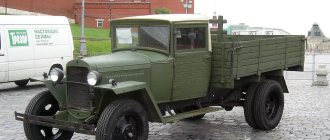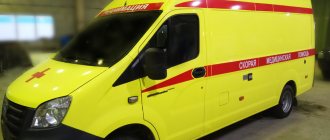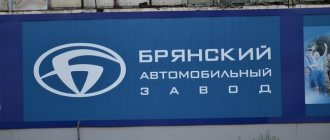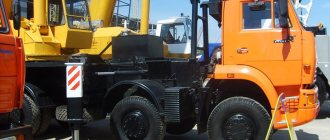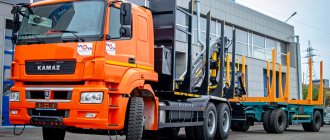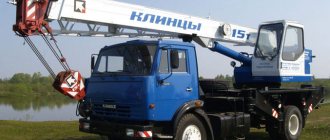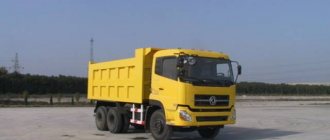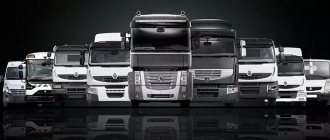“Made with us” and on Yandex.Zen
Perhaps for the first time in its history, the most closed automobile plant in Russia, the Bryansk Automobile Plant, or BAZ for short, opened its doors to the press.
Literally today I returned from the enterprise and I hasten to share.
During Soviet times, BAZ was engaged in the development and production of special wheeled chassis and tractors for mobile missile systems, as well as for multiple launch rocket systems (MLRS).
Among the most famous:
RK "Luna"
MLRS "Hurricane"
And also for the Redut
In the 70s, the chassis for the Osa air defense system was created here.
Well, the most famous RK “Tochka”
And without exaggeration, the unique chassis for the Oka rocket launcher
After the aforementioned Misha, the marked one, put the last ones under the knife late in the night, all the technological equipment that was used in the production of the chassis was also destroyed. As a result, the enterprise lost orders, finished products and equipment, that is, it found itself in a crisis, and then came the dashing 90s.
There is no point in describing all the problems that BAZ encountered during this time.
In the early 2000s, here, practically in ruins, a new family of wheeled chassis was created for the needs of the Ministry of Defense, which was called “Voshchina” . It was its production that I was able to see.
First, a photo of how BAZ began, namely with a tractor, to which a monument was erected on the territory of the enterprise.
Production begins with metalworking. This is what a local welder looks like:
But here are the power elements of the future frame. The production equipment that was brought back to life is clearly visible; of course, it cannot be called new.
.
The frame is then sent to the conveyor. It is important to note that special wheeled chassis are a one-piece and unique product, each unit is made according to customer requirements, that is, this is not the same conveyor belt that makes passenger cars. The volume of products produced is in the hundreds per year.
The suspension is torsion bar, there is a reduction gear and differential locks
Domestic engines, produced by the Tutaevsky plant:
The cabin is ascetic. It can be seen that the requirements of the military have not changed much, although the chair is adjustable and there is air conditioning.
—
Once the chassis is ready, it is sent to the factory run. Upon completion, he returns to the workshop, where he is inspected again.
These monsters are controlled by ladies:
After this, the car is sent to the customer.
But especially for us, the customer decided to wait and the cars went to the banks of the Desna River, where they demonstrated what they were capable of.
The cars were driven by these stern drivers:
The BAZ-6402 tractor, the same one that carries the S-300 and S-400 missiles, conquered the dunes
Then he conquered the river
The chassis easily overcomes a ford with a depth of 170 cm without any preparation.
And goes ashore:
To maintain the purity of the experiment, ballast was installed on the chassis. The weight of this steel cube is 11 tons.
—
—
BAZ also developed a multi-lift system, which is installed on almost all trucks. We were shown how it works with KAMAZ
Then we went to the design bureau. This is where the future is born.
A promising direction is the use of the BAZ chassis as part of cranes with a lifting capacity of up to 200 tons:
And here is a sketch of the chassis, on which work is in full swing:
Now the plant is at 100% capacity and is even experiencing a staff shortage. But at the same time, there are problems about which I will prepare a separate material for the military-industrial complex newspaper.
Well, instead of Ps, a short video . There are no miracles of editing, just notes stuck together:
Peculiarities
The BAZ-5937 chassis has a semi-closed body, reliably protected from water, and is made of steel. In its front part there is a control unit, in the middle there is a camera for specific equipment, and in the stern there is a combined engine and transmission compartment.
Built-in frame, cover reinforcement elements, stiffeners and racks are parts that give the body additional strength characteristics. Stability and movement afloat are guaranteed by a pair of water jet units. Special transport vehicles of the first series are noticeably different in the specific blunt shape of the nose. It is worth adding that these cars are not equipped with side windows in the cab, which limits visibility and can cause a traffic accident. The identical arrangement of the base axles is associated with the desire to evenly distribute wheel loads, as well as increase the cross-country ability of the chassis in question.
Power point
To control the turning radius of the equipment, the wheels on the outer axles are guided. Such a scheme reduced resistance during curvilinear movement. The BAZ-5937 military vehicle has a six-cylinder diesel power unit 5D20B-300 (manufactured by Barnaul Transport Machine-Building Plant).
The engine power is three hundred horsepower and uses a liquid-type cooling system. The design feature of the radiator location is its horizontal installation above the engine. The installation is started in two ways: by electric starter or by supplying air from a high-pressure cylinder.
Historical facts
The starting batches had shortened bodies and a flat front panel, while the light elements were mounted in protective guards on the sides of the control compartment. With the development of serial production, the only external changes to the BAZ-5937 vehicle were the elongated frontal pointed part of the frame with built-in headlights, as well as additional cab windows in the corners, allowing for increased visibility.
All options are united by a single track size - 2.27 m, ground clearance - 43 cm, turning radius - 12 m. The equipment successfully overcame two-meter ditches and a thirty-degree rise. Average fuel consumption is about 40 liters per hundred kilometers.
Prototypes of the technology in question were developed in 1969–1970. Serial production was officially approved in 1972. Finished modifications were tested for leaks in a special rain chamber or in open reservoirs. The standard disadvantages of all cars include increased tire wear and low efficiency of the power plant.
Transmission and gearbox
The BAZ-5937 gearbox is equipped with a built-in differential, torque is transmitted using mechanics, and there is an on-board power distribution circuit. The transmission unit is aimed at interacting with the wheels of both sides.
The wheel suspension block is of an independent type, torsion bar, equipped with wishbones. This design makes it possible to significantly improve the smoothness of the ride, as well as develop speed indicators on off-road and rough terrain. The wheels are equipped with an air pressure adjustment system. The brake unit is a shoe-type, sealed assembly with pneumohydraulic reinforcement.
Steering
This structural block has a worm-type operating principle with a hydraulic booster; the buoyancy of the device is provided by the water jet flaps and the wheels themselves. The chassis load capacity is within 7.5 tons. At the same time, the maximum speed on roads is 70 km/h, while afloat is 8 km/h.
Additional equipment available on the BAZ-5937 chassis:
- General type filter and ventilation unit.
- Heat and ventilation system OV-65G.
- Water outflow nodes.
- Tank intercom devices "R-124".
- Automatic fire protection system "Rosa".
- Radiation reconnaissance and special information processing devices.
- Observation devices "TNPO170A" for movement on water, night vision devices.
In addition, an autonomous power supply with a gas turbine was installed on the chassis base.
Other characteristics
When reviewing the BAZ-5937 military vehicle, the technical characteristics of which allowed it to be used both for military purposes and in disaster areas, a number of other indicators should be noted. These include the following:
- Equipped with sixteen cardan shafts that transmit torque to single-stage final and wheel gearboxes.
- The presence of a dry double-disc clutch and a power take-off unit for the generator, pump and compressor.
- Wide-profile tube tires “ID-B284” (1200*500/508) are installed on all six wheels.
- There is a system for adjusting the internal tire pressure (1-4 kgf/sq. cm).
- The fuel tank is located on the left in front of the rear wheel, its capacity is 320 liters.
To understand what kind of gearbox is on the BAZ-5937, it should be noted that it is of a mechanical type, has five stages, is interconnected with a two-mode transfer system, which is equipped with a symmetrical side differential with locking.

